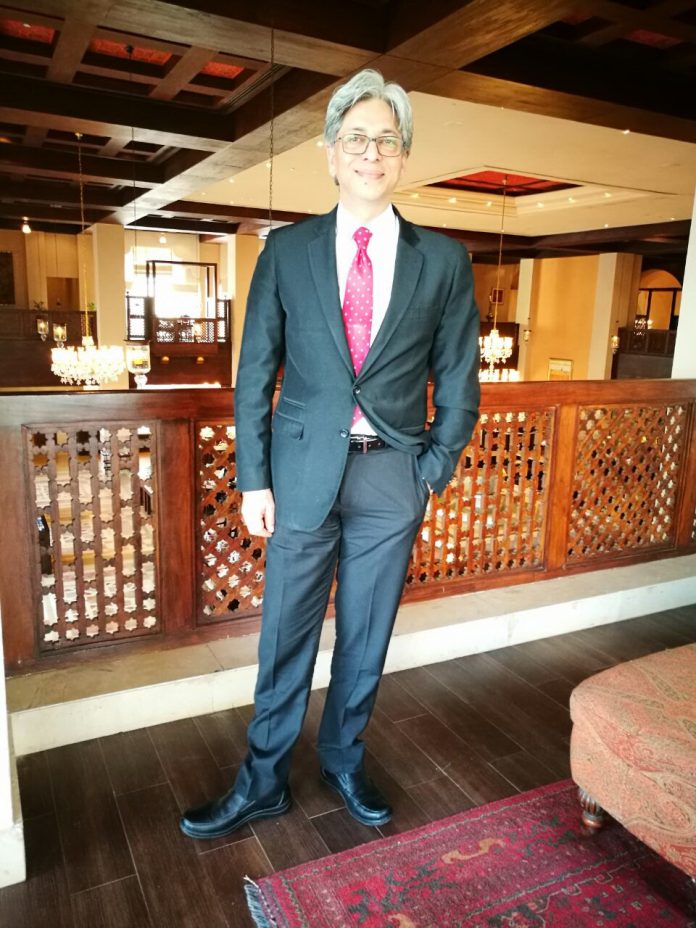“I remember my professor used to tell us that every building communicates with you and makes you feel a certain way,” said Kabeer Malik, Chairman Institute of Architects Pakistan (IAP) Rawalpindi/Islamabad chapter.
Malik, like every other young university student, did not pay much heed to what his teacher said then. But, twenty-five years down the road, he can both understand and relate to it. Not only that, he also instils the same ideology in his students.
An architect by profession, Malik has given several years of his life for the betterment of the field of architecture in Pakistan. The passion comes from his father, who himself was a civil engineer and was involved in the planning of Islamabad city. He was also the project manager of the Tarbela Dam Project.
Like father like son, after completing his degree in architecture, Malik did his master in Business Administration and another master in Project Management.
His lustrous career involves working with legendary Architect Maestro Nayyar Ali Dada and other famous and well versed international Architects.
Despite having worked in the practical corporate environment for almost half his life, the man has not lost his romantic streak. He believes in culture, poetry, music and arts. Malik has visited more than a dozen countries and has always enjoyed the arts and culture of the places he travelled to, whether for work or for pleasure.
He says that architecture stems from romanticism.
“Architecture is your smile, your heartbeat, the way you talk, the way you respond and react. If you are connected with yourself, you can connect with architecture,” said Malik.
He is a firm believer that only a passionate teacher can bring out an architect in a person, which is why Malik has also been a visiting faculty member in different architecture schools, guiding, coaching and inspiring upcoming young architects on their designing and work techniques.
Moreover, presently he is working as the General Manager Projects with TPS and as project member with Aga Khan Development Network in project cycle for Five Star Deluxe Hotels and resorts in South and Central Asia.
Not only that but he has also been very successful in bringing the architect community under one umbrella through his union institute that he currently chairs.
The Institute of Architects, Pakistan (IAP) was established in 1957 by a small group of architects who received training in the finest institutes of the world. It has come a long way from there. IAP currently has four chapters covering the entire country:
- a) Karachi Chapter covers the Provinces of Sindh and Baluchistan
- b) Lahore Chapter covers the Province of Punjab
- c) Rawalpindi-Islamabad Chapter covers Islamabad Federal Area and the Northern Areas
- d) Peshawar Chapter covers NWFP
There is one more Chapter likely to be added during the coming year: Quetta Chapter covering Baluchistan.
IAP serves on many committees of the Local, Provincial and Federal Government bodies and is involved in assisting the government at different levels, including revision of building bylaws of different towns and cities. IAP also organises design competitions for the government and corporate clientele.
Under Malik’s leadership, the institute is hosting a three-day event, a legacy of several years. This event is an old IAP tradition that Malik says he’s honoured to be a part of. It includes a three-day expo featuring building products and the work of novice and seasoned architects. It involves an architectural forum, cultural performance night and dinner. It provides a platform for liaison and awareness between the architectural community, the building materials market and the general public, professionally, academically and socially.
“The team and I are pouring our sweat and blood to get the minutest of details correct, and I am determined to make this event a great success,” added Malik.
Malik believes that architects bear very important responsibility on their shoulders.
“The role of architects has always been a complex one: we are the makers or breakers of the city; our every action, from residential to commercial projects, impact the fabric of the society,” Malik said.
“It is the responsibility of the architect to ensure that he provides a better quality of living and has a positive impact on the urban fabric,” Malik said.
However, he thinks it is unfortunate that the society does not give enough recognition to the importance of an architect’s role.
The idea of the collective is crucial to him and he thinks collective discussions and debates are the mechanisms of resolving issues faced by the city.
He gave the example of Islamabad that population and demand for land and property have skyrocketed. As history precedents, people start exploring new spaces in the outskirts and the city expands. This issue and many others are taken up by the IAPEX Forum this year.
Malik and his team plan on discussing this in the architect community and with the authorities in the government.
“We see betterment lurking in the corner, only if urban planning is left to the experts,” said Malik.




